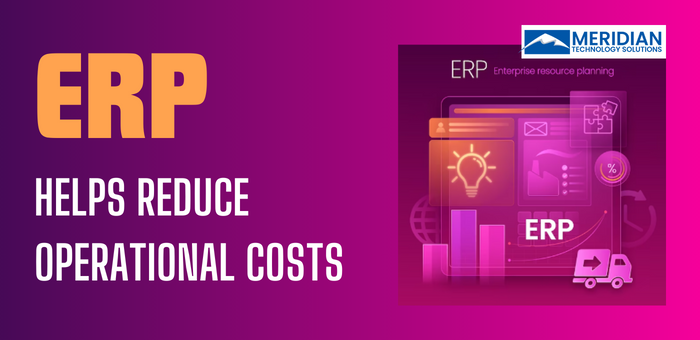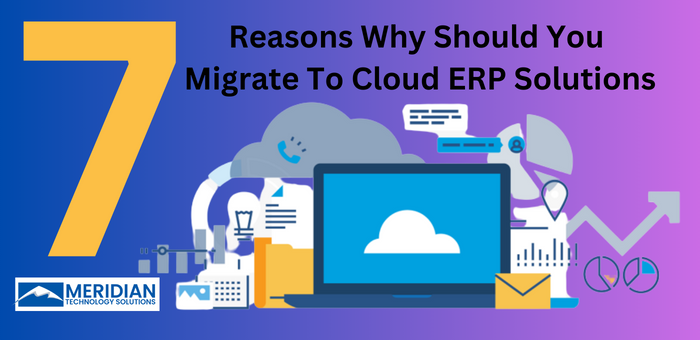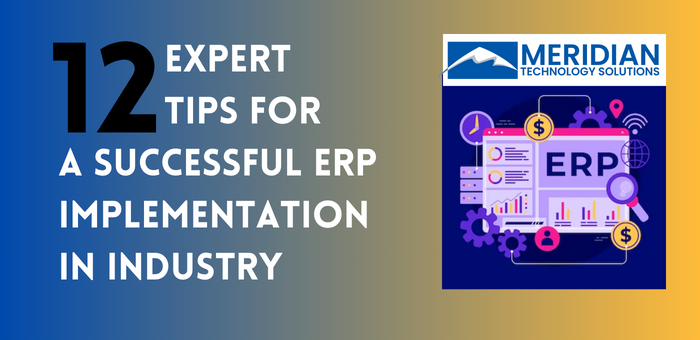How ERP Helps Reduce Operational Costs?
ERP systems have reformed the way businesses operate nowadays.
What is an ERP System?
ERP systems, aka Enterprise Resource Planning system is an all-inclusive software solution that allows small and big organizations to manage their core business processes effectively and efficiently.
ERP systems integrate different business functions including finance, human resources, manufacturing, supply chain management, and customer relationship management into a single, cohesive platform. ERP systems provide real-time data and facilitate communication across different departments, enabling organizations to make informed decisions and streamline their operations.
According to Market Search Engine, the ERP market remains in a phase of rapid expansion, with total market size expected to exceed $49.5 billion by 2025. And, the global market growth of ERP systems is expected to increase at a CAGR of over 8% in the next five years.
ERP systems have gained widespread adoption across industries and organizations of all sizes due to the numerous advantages they offer.
After ERP implementation, 49% of companies said they enhanced all business processes. One of the most significant benefits is their ability to reduce operational costs.
Let’s delve into how ERP systems achieve cost reduction in various aspects of business operations.
In this blogpost, we will discuss how ERP enhances efficiency, streamlines processes, improves decision-making, and promotes a culture of continuous improvement, ultimately leading to substantial savings.
1. Operational Cost Reduction with Process Efficiency-
- Streamlined Workflows – ERP systems streamline workflows by automating routine tasks and eliminating manual data entry. This automation helps reduce the chances of errors and accelerates operational processes. And, thus, employees can give more focus on value-added activities. For instance, ERP software can automate the processing of invoice in the finance department. This reduces the time and effort required by manpower to perform invoice management manually.
- Inventory Management – Efficient inventory management is critical for cost reduction in many industries. ERP systems offer real-time visibility into inventory levels, helping organizations optimize stock levels, reduce carrying costs, and minimize the risk of overstocking or stockouts. By automating inventory tracking and reorder processes, businesses can save on storage costs and minimize losses due to obsolete inventory.
- Production Planning and Scheduling- Manufacturing companies benefit significantly from ERP systems’ ability to optimize production planning and scheduling. ERP software considers factors such as raw material availability, machine capacity, and workforce availability to create efficient production schedules. This minimizes downtime, reduces overtime labor costs, and ensures that resources are used optimally.
- Supplier Relationship Management – Effective supplier relationship management is vital for cost reduction in procurement. ERP systems provide tools for supplier evaluation, performance monitoring, and order management. By analyzing supplier performance data, organizations can identify cost-effective suppliers and negotiate better terms, leading to lower procurement costs.
2. Operational Cost Reduction with Data-Driven Decision-Making
- Real-Time Insights – ERP systems provide real-time access to data from various departments, enabling faster and more informed decision-making. Managers can access up-to-date financial, operational, and customer data to make strategic decisions promptly. This real-time visibility reduces the risk of making costly mistakes based on outdated or incomplete information.
- Financial Management – The financial module of ERP systems offers extensive cost control features. It enables organizations to track expenses, monitor budgets, and generate financial reports quickly. By analyzing financial data in real-time, companies can identify cost-saving opportunities, allocate resources more efficiently, and reduce unnecessary spending.
- Demand Forecasting – Accurate demand forecasting is crucial for optimizing inventory levels, production schedules, and supply chain operations. ERP systems use historical data and sophisticated algorithms to improve demand forecasting accuracy. This reduces the risk of carrying excess inventory or facing shortages, ultimately lowering operational costs.
3. Operational Cost Reduction with Enhanced Collaboration
- Cross-Functional Communication – ERP systems break down silos within organizations by facilitating communication and data sharing among different departments. For instance, sales teams can access real-time inventory data to provide accurate delivery estimates to customers, reducing order fulfillment costs. Similarly, marketing teams can access customer data from the CRM module to personalize marketing campaigns, leading to better ROI.
- Reduced Duplication of Effort – In many organizations, duplicate data entry and redundant processes are common sources of operational inefficiency. ERP systems centralize data and automate data synchronization between different modules. This eliminates the need for manual data entry and reduces the chances of errors, leading to cost savings and improved accuracy.
- Collaboration with External Partners – ERP systems often include features that enable collaboration with external partners such as suppliers and customers. By sharing information and collaborating closely with suppliers, organizations can negotiate better terms, reduce lead times, and lower procurement costs. Similarly, providing customers with self-service portals through ERP systems can reduce customer service costs and improve satisfaction.
4. Operational Cost Reduction with Compliance and Risk Management
- Regulatory Compliance – Compliance with industry-specific regulations is essential for avoiding costly penalties and legal issues. ERP systems often include compliance management features that help organizations adhere to regulations by automating data tracking and reporting. This reduces the risk of non-compliance, associated fines, and the costs of managing compliance manually.
- Risk Identification and Mitigation – ERP systems provide tools for risk identification and mitigation, helping organizations proactively manage potential threats. By analyzing data and identifying patterns, organizations can anticipate risks such as supply chain disruptions, quality issues, or financial discrepancies. Early risk identification enables timely actions to mitigate these risks and prevent costly incidents.
5. Operational Cost Reduction with Scalability and Flexibility
- Scalability- ERP systems are designed to accommodate the growth of organizations. As businesses expand, their operational complexity typically increases. ERP systems can scale to meet the growing demands of larger operations without significantly increasing costs. This scalability ensures that organizations can continue to operate efficiently without the need for a complete system overhaul.
- Flexibility – In a rapidly changing business environment, flexibility is crucial for cost reduction. ERP systems allow organizations to adapt to changing market conditions, customer preferences, and regulatory requirements. They can quickly configure the system to accommodate new business processes or modify existing ones, reducing the cost and disruption associated with such changes.
6. Operational Cost Reduction with Better Customer Service
- Customer Relationship Management (CRM) – ERP systems often include CRM modules that help organizations improve customer service and retention. By tracking customer interactions, preferences, and purchase history, businesses can provide personalized service, leading to higher customer satisfaction and loyalty. Satisfied customers are more likely to return, reducing the cost of acquiring new customers.
- Order Fulfillment – Efficient order fulfillment is essential for reducing operational costs. ERP systems streamline the order-to-cash process by providing real-time visibility into order status, inventory levels, and delivery schedules. This reduces the time and effort required to process orders and minimizes errors, leading to cost savings and improved customer service.
7. Operational Cost Reduction with Continuous Improvement
- Data Analytics – ERP systems offer advanced data analytics capabilities that enable organizations to identify areas for improvement. By analyzing data on key performance indicators (KPIs), organizations can pinpoint inefficiencies, bottlenecks, and areas with potential for cost reduction. This data-driven approach allows organizations to make data-backed decisions to improve processes continually.
- Lean and Six Sigma Principles – ERP systems can be configured to align with Lean and Six Sigma principles, which focus on eliminating waste and improving efficiency. By implementing these principles within an ERP system, organizations can systematically identify and eliminate non-value-added activities, reduce defects, and optimize processes, resulting in significant cost reductions.
To Sum Up
In conclusion, Enterprise Resource Planning (ERP) systems play a crucial role in reducing operational costs across various aspects of business operations. By streamlining workflows, providing real-time insights, improving collaboration, facilitating compliance and risk management.
If you are looking for a reliable enterprise resource management, contact us.



